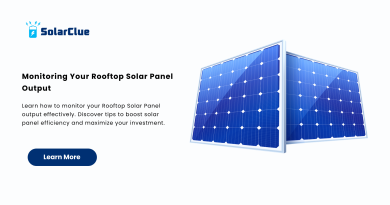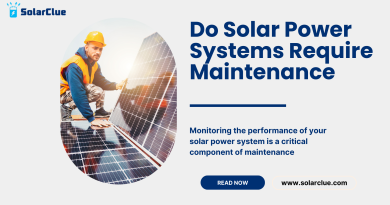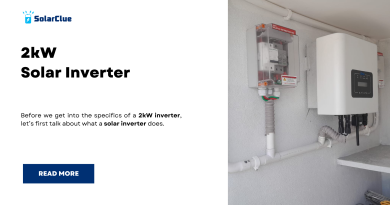Do Solar Panels Work With Artificial Light?
Solar panels have become a popular source of renewable energy, converting sunlight into electricity through the photovoltaic effect. However, when it comes to artificial light or low-light environments, solar panels face significant limitations. This blog post will explore these limitations, explain the science behind solar panel operation, and discuss alternative energy sources for indoor applications.
Table of Contents
- 1 The Science Behind Solar Panels and Their Reliance on Sunlight
- 2 The Challenges of Using Solar Panels Indoors or in Low-Light Environments
- 3 Alternative Energy Sources for Indoor Applications
- 4 The Potential for Future Advancements in Solar Panel Technology
- 5 Common Misconceptions About Solar Panels and Artificial Light
- 6 Case Studies of Unsuccessful Solar Panel Applications in Indoor Settings
- 7 Comparison of Energy Sources for Indoor Applications
- 8 Conclusion
- 9
- 10 FAQ Section
The Science Behind Solar Panels and Their Reliance on Sunlight
The Photovoltaic Effect
- Definition: The photovoltaic effect is the process by which solar panels convert sunlight into electricity. When photons from sunlight hit the solar cells, they excite electrons, creating an electric current.
- Sunlight Dependency: Solar panels are designed to operate optimally under direct sunlight, with a specific range of light wavelengths and intensities. The energy from sunlight is crucial for generating the necessary voltage and current.
Light Intensity and Solar Panel Efficiency
- Optimal Conditions: Solar panels perform best under standard test conditions (STC), which assume an irradiance of 1000 W/m², a cell temperature of 25°C, and air mass of 1.5.
- Artificial Light: Artificial light sources, such as LEDs, fluorescent bulbs, and incandescent lights, have much lower light intensity and different spectral distributions compared to sunlight. This makes them less effective in generating electricity from solar panels.
The Challenges of Using Solar Panels Indoors or in Low-Light Environments
1. Reduced Light Intensity
- Lower Efficiency: Indoors or in low-light environments, the intensity of light is significantly lower than natural sunlight. Solar panels exposed to artificial light produce much less electricity, often rendering them inefficient or unusable in such settings.
- Spectral Mismatch: Artificial light sources emit light across a narrower spectrum than sunlight, which can further reduce the efficiency of solar panels, as they may not effectively convert certain wavelengths of artificial light.
2. Limited Power Output
- Insufficient Power Generation: The electricity generated by solar panels in indoor settings is often insufficient to power even low-energy devices. For instance, solar panels under artificial light might only generate a fraction of their rated power output.
- Energy Storage Challenges: Using solar panels indoors to charge batteries or store energy for later use is generally impractical due to the low power output in artificial light conditions.
3. Practical Limitations
- Space Constraints: The amount of space required to generate usable electricity with solar panels in artificial light would be impractical, as the panels would need to be large and the light sources would need to be extremely bright.
- Economic Viability: The cost of setting up and maintaining solar panels for indoor use under artificial light would outweigh the benefits, making it an economically unfeasible option for most applications.
Alternative Energy Sources for Indoor Applications
1. Batteries
- Description: Rechargeable batteries store energy and can be used to power devices indoors. They can be charged using solar panels in outdoor settings or through grid electricity.
- Applications: Batteries are ideal for powering small electronic devices, emergency lighting, and portable gadgets.
2. Generators
- Description: Generators convert fuel, such as gasoline or diesel, into electricity. They are commonly used as backup power sources for homes and businesses.
- Applications: Generators are suitable for providing reliable power during outages or in off-grid situations where solar panels are not feasible.
3. Plug-in Power Sources
- Description: Directly plugging devices into the grid remains the most common and reliable method of powering indoor applications.
- Applications: Ideal for everyday household appliances, lighting, and electronic devices.
4. Low-Energy Alternatives
- Description: Using energy-efficient devices or appliances can reduce the overall power demand, making it easier to rely on batteries or other alternative energy sources.
- Applications: LED lighting, energy-efficient appliances, and low-power gadgets.
The Potential for Future Advancements in Solar Panel Technology
1. Enhanced Low-Light Performance
- Technological Innovations: Research is ongoing to develop solar panels that can operate more efficiently under low-light conditions. These advancements could include new materials, such as perovskites, or improved photovoltaic cell designs that capture a broader spectrum of light.
2. Artificial Light Harvesting
- Emerging Technologies: Some experimental solar panels are being designed to specifically harvest energy from artificial light sources. While these are not yet widely available, they represent a potential future direction for solar technology.
3. Integrated Indoor Solar Solutions
- Smart Devices: Future solar technologies may be integrated into indoor environments, such as windows or walls, that can capture ambient light more effectively. These solutions could help bridge the gap between outdoor solar power generation and indoor energy needs.
Common Misconceptions About Solar Panels and Artificial Light
1. Myth: Solar Panels Can Work Just as Well Indoors
- Reality: Solar panels are not designed to operate efficiently under artificial light. Their performance drops significantly in indoor settings, and they are not a viable option for generating substantial electricity indoors.
2. Myth: Any Light Source Can Power Solar Panels
- Reality: While solar panels can convert some energy from artificial light, the amount is minimal and often not enough to power even small devices. The intensity and spectrum of sunlight are necessary for optimal solar panel performance.
3. Myth: Solar Panels Are a Good Backup for Indoor Power
- Reality: Solar panels are not effective as a backup power source indoors due to their reliance on sunlight. Batteries or generators are better alternatives for indoor backup power.
Case Studies of Unsuccessful Solar Panel Applications in Indoor Settings
1. Solar-Powered Indoor Gadgets
- Case: A company attempted to market solar-powered indoor gadgets that relied on artificial light for charging. The devices were underpowered and failed to meet user expectations.
- Outcome: The product line was discontinued, highlighting the limitations of using solar panels in indoor environments.
2. Indoor Solar Lighting
- Case: A residential building installed solar-powered indoor lighting with panels positioned near windows. The light output was insufficient, especially during cloudy days or at night.
- Outcome: The system was replaced with battery-powered LED lights, demonstrating the need for alternative solutions in indoor applications.
3. Office Solar Panels
- Case: An office attempted to use solar panels mounted near fluorescent lights to power desk accessories. The energy generated was minimal and inconsistent.
- Outcome: The project was abandoned, and the office switched to grid power, reinforcing the impracticality of indoor solar panel use.
Comparison of Energy Sources for Indoor Applications
| Energy Source | Power Output | Suitability for Indoor Use | Cost | Applications |
|---|---|---|---|---|
| Solar Panels (Artificial Light) | Low | Limited | High | Not recommended |
| Batteries | Moderate to High | Excellent | Variable | Portable devices, emergency power |
| Generators | High | Good | High | Backup power, off-grid applications |
| Plug-in Power (Grid) | Very High | Excellent | Low | Household appliances, lighting |
| Low-Energy Alternatives | Low to Moderate | Excellent | Low | Energy-efficient devices, lighting |
Conclusion
Solar panels are an excellent source of renewable energy when used outdoors under direct sunlight. However, their performance drops significantly in artificial light or low-light environments, making them unsuitable for most indoor applications. While ongoing research may lead to advancements that improve the efficiency of solar panels under these conditions, alternative energy sources like batteries, generators, and energy-efficient devices remain the most practical options for indoor power needs. Understanding the limitations of solar panels in artificial light can help consumers make informed decisions and choose the best energy solutions for their specific circumstances.
Here at SolarClue®, we offer a smart, practical, and “beautiful” solution. You will be answered for all the questions related to Solar.
We provide all kinds of brands that are the Best Solar panels in India.
If you are the one who is planning for the solar power system. Don’t hesitate to contact our team!
Looking forward to empowering you with solar energy, just like hundreds of our other clients!
FAQ Section
1. Can solar panels work effectively under artificial light?
Solar panels can generate a small amount of electricity under artificial light, but their efficiency is significantly reduced compared to sunlight. They are not suitable for powering most devices indoors.
2. Why do solar panels perform poorly in low-light environments?
Solar panels rely on the intensity and spectrum of sunlight to generate electricity. Low-light environments, including artificial light, provide insufficient energy to effectively power solar panels.
3. What are the best alternative energy sources for indoor applications?
Batteries, generators, and direct grid power are the most effective alternatives for indoor energy needs. Energy-efficient devices can also help reduce overall power consumption.
4. Are there any future advancements that could improve the performance of solar panels indoors?
Research is ongoing to develop solar panels that perform better under low-light conditions or can harvest energy from artificial light. However, these technologies are still in the experimental stages.
5. Is it possible to use solar panels as a backup power source indoors?
Solar panels are not effective as an indoor backup power source due to their dependence on sunlight. Batteries or generators are more reliable options for backup power.



